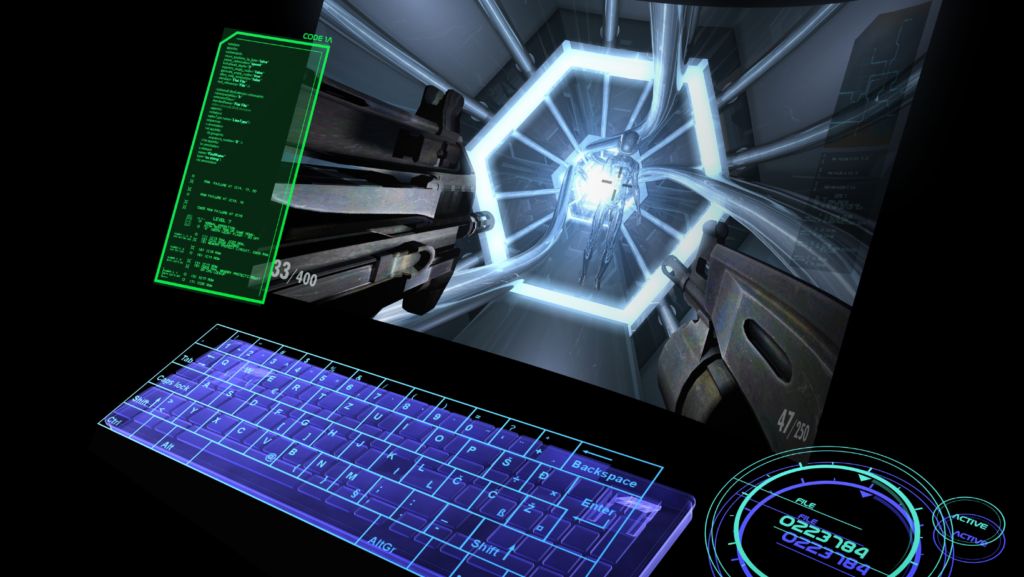Imagine a world where your computer responds to your gestures, or where you can feel the texture of digital images.
So, buckle up for an exciting journey into the realm of futuristic computer gadgets.
Futuristic Computer Gadgets
As an intersecting trajectory between technology and imaginations, the futuristic computer gadgets have undergone a radical transformation over the years. This evolution, deeply rooted in the past and projected towards a futuristic outlook, showcases the phenomenal progress in technological innovations.
From Past to Present
Seizing the genesis of futuristic computer gadgets brings us back to the bulky and inefficient devices of the early 20th Century. From tactile typewriters to enormous vacuum tube computers, these gadgets were limited in functionality, lacking portability. Drawing insights from the past, advancements propelled technology towards miniaturization and efficiency. By the 1970s, more compact and efficient silicon chips replaced vacuum tubes, marking the dawn of personal computers.

In the late 20th Century, with the advancement of microtechnology, computers transformed from room-sized boxes to pocket-sized devices containing far greater computing power. Commodore PET, Apple II, and IBM PC serve as explicit examples of this transition. These microcomputers became easily accessible and affordable for the average user, driving computer education and aiding small business functionality.
As we progressed into the 21st Century, computer gadgets embraced mobility and ubiquity. Mobile phones, laptops, smartwatches, and tablets, each offered unprecedented portability. Combined with the power of internet connectivity, these devices broke geographical barriers, effortlessly connecting the masses regardless of their location.
Towards a Futuristic Outlook
Charting the trajectory towards the futuristic computer gadgets show promise of unimaginable possibilities. The horizon of transformative technology lies in AI-driven innovations, augmented reality, quantum computing, among other advancements. They possess the potential to change not only the way we interact with technology but also the human experience itself.

Augmented Reality (AR) and Virtual Reality (VR) gizmos, for instance, hold the potential to immerse users into simulated reality environments. These gadgets, such as Microsoft’s HoloLens and Oculus Rift, presage a future of seamless interaction with digital information. Additionally, AI-powered devices like autonomous cars and personal voice assistants hint at a future where machines can learn, adapt, and potentially outperform human capabilities.
Top Futuristic Computer Gadgets to Look Out For
Following the historical narrative of the futuristic computer gadget evolution, a spectrum of anticipatory innovations emerges on the horizon. These encompass cutting-edge wearables and next-generation computing devices, displaying an array of functionalities that shape user experience.
Next-Generation Computing Devices
As for next-generation computing devices, innovation continues to push the limits of what is possible. Beyond the realm of traditional devices, companies such as Microsoft, Levono, and Asus introduce transformative models of device designs and form-factors. Microsoft Surface Neo, a dual-screen device that reimagines multitasking and productivity, warrants special mention.

Moreover, the era of quantum computing ushers hardware able to solve complex calculations at unprecedented speeds. D-Wave, for instance, pioneers the development of quantum computers, addressing problems that are currently impossible to solve with classical computers.
Furthermore, AI-integrated chips gain traction as integral components of futuristic gadgets. Nvidia’s powerful Graphical Processing Unit (GPU), an AI-supercomputer on a chip, paves the way for sophisticated data-processing tasks and facilitates the integration of AI in everyday devices.
Radical Transformation
As we’ve journeyed through the evolution of the futuristic computer gadgets, it’s clear that we’re on the brink of a technological revolution. The power of silicon chips, the mobility of devices, and the integration of AI are transforming our world. Futuristic gadgets, such as quantum computers, smart glasses, and fitness trackers, are not just improving productivity but also redefining personal use and entertainment. However, with these advancements come challenges. Data security and ethical considerations surrounding AI integration are significant concerns that we must address. The future of computer gadgets is exciting, but it’s also complex. It’s a landscape filled with opportunities and challenges, and navigating it will require both technological innovation and ethical responsibility. As we look to the future, let’s embrace the possibilities while also safeguarding our privacy and ethics. The future of computer gadgets is here, and it’s time we shape it responsibly.

